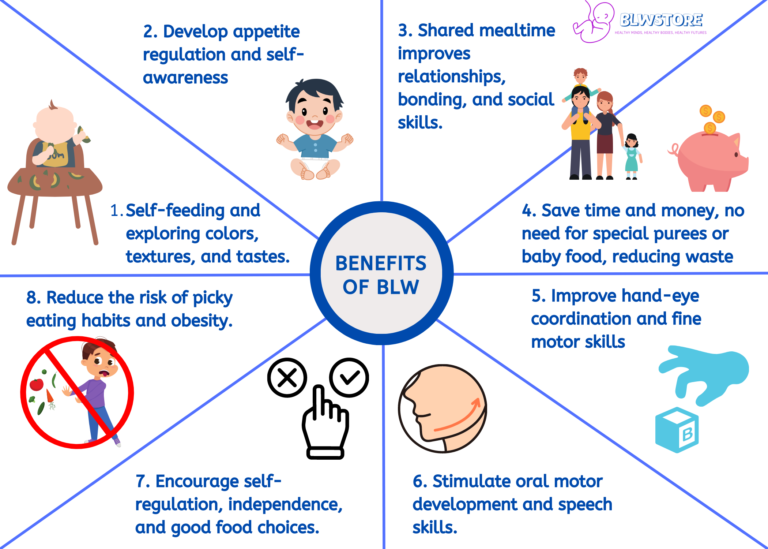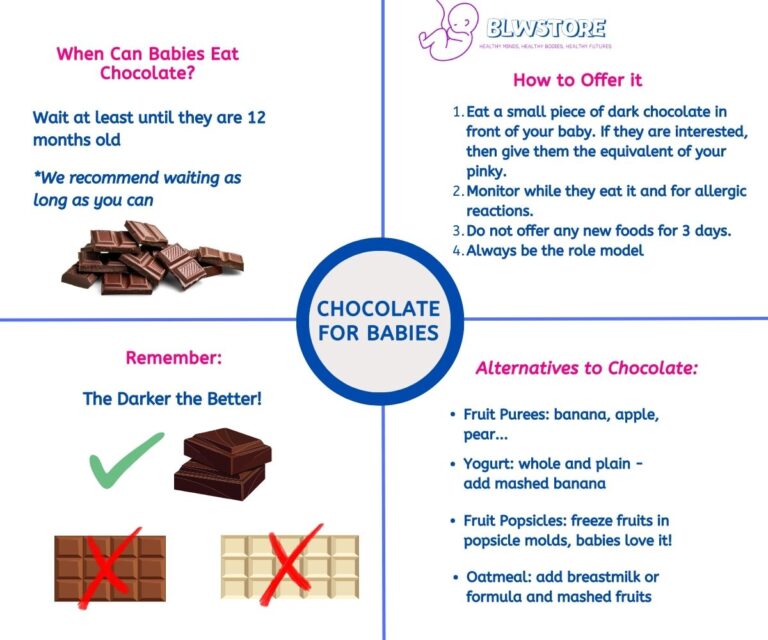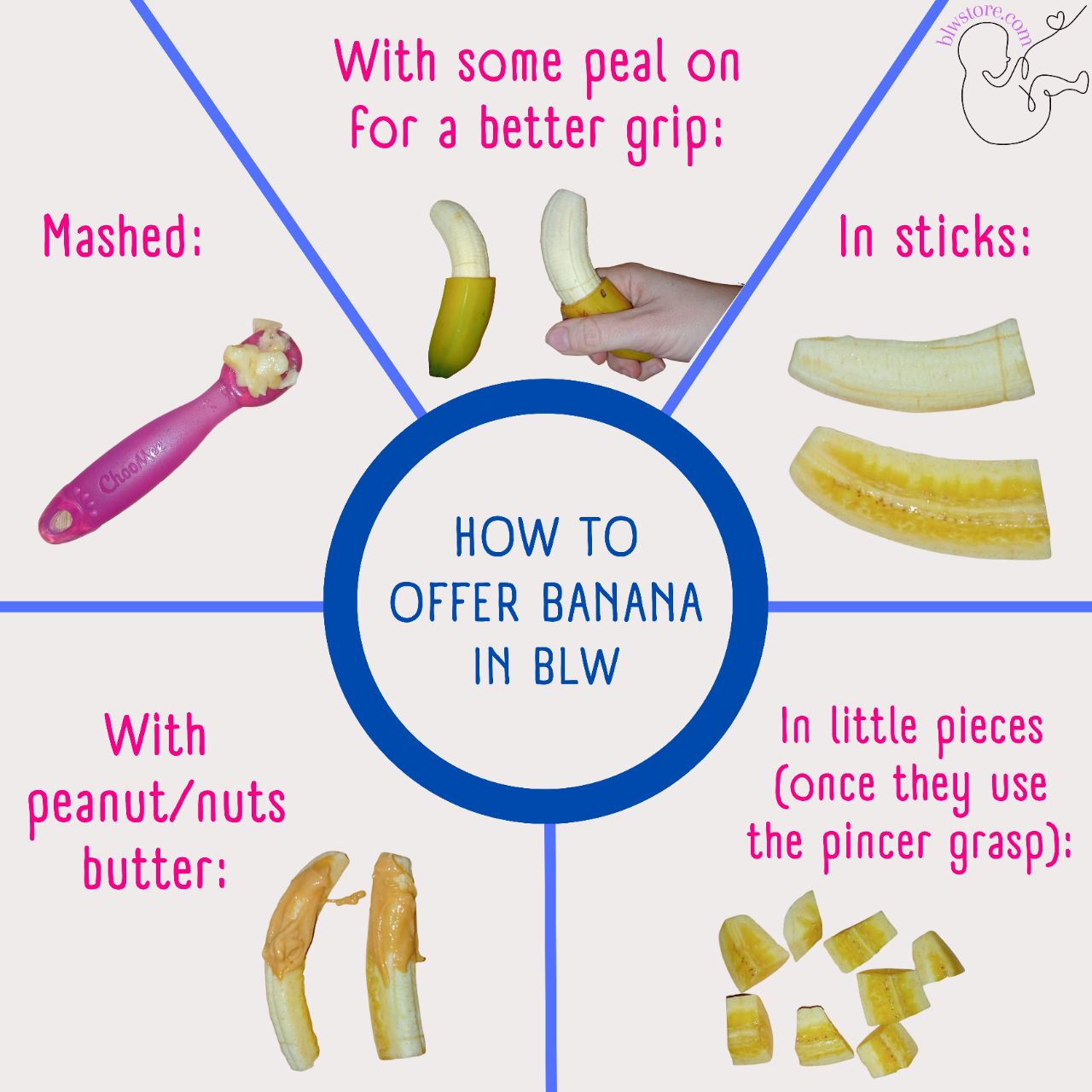
Welcoming your baby to the world of solid foods can be a quite scary task, but baby-led weaning with bananas is an excellent way to start.
In this article, you’ll learn:
- Why bananas make a great first food for baby-led weaning
- How to serve bananas in various forms for a smooth transition
- When to introduce bananas to your baby’s diet
- Ripe vs. green bananas: which one to choose for baby-led weaning
- The nutritional benefits of bananas for your baby
- Tips on preserving bananas for maximum freshness
Dive into our baby-led weaning banana guide and watch your baby discover new tastes and textures while developing healthy eating habits.
Let’s get after it!
If you don’t feel ready to start solids, you may start with purees and little by little move on to solids.
Check out our Banana Puree Recipe.
Key takeaways
- Bananas are a fantastic first food for baby-led weaning due to their ease of handling, soft texture, and delicious taste.
- Serve bananas in various forms, like mashed, half-peeled, or small pieces, to suit your baby’s preferences and developmental stage.
- Introduce bananas to your baby’s diet when they are around six months old and show signs of readiness for solid foods.
- Ripe bananas are recommended for younger babies, while green bananas can be introduced as your baby becomes more accustomed to solid foods.
- Bananas offer numerous nutritional benefits, including fiber, vitamins, and minerals, that contribute to your baby’s overall health and development.
How do you serve banana to your baby?
Banana Fingers
Banana sticks are perfect for their little hands and a great way to introduce bananas for the first time.
This way they start to get used to its texture and real taste, which is always recommended when introducing a new food. The more natural the better.
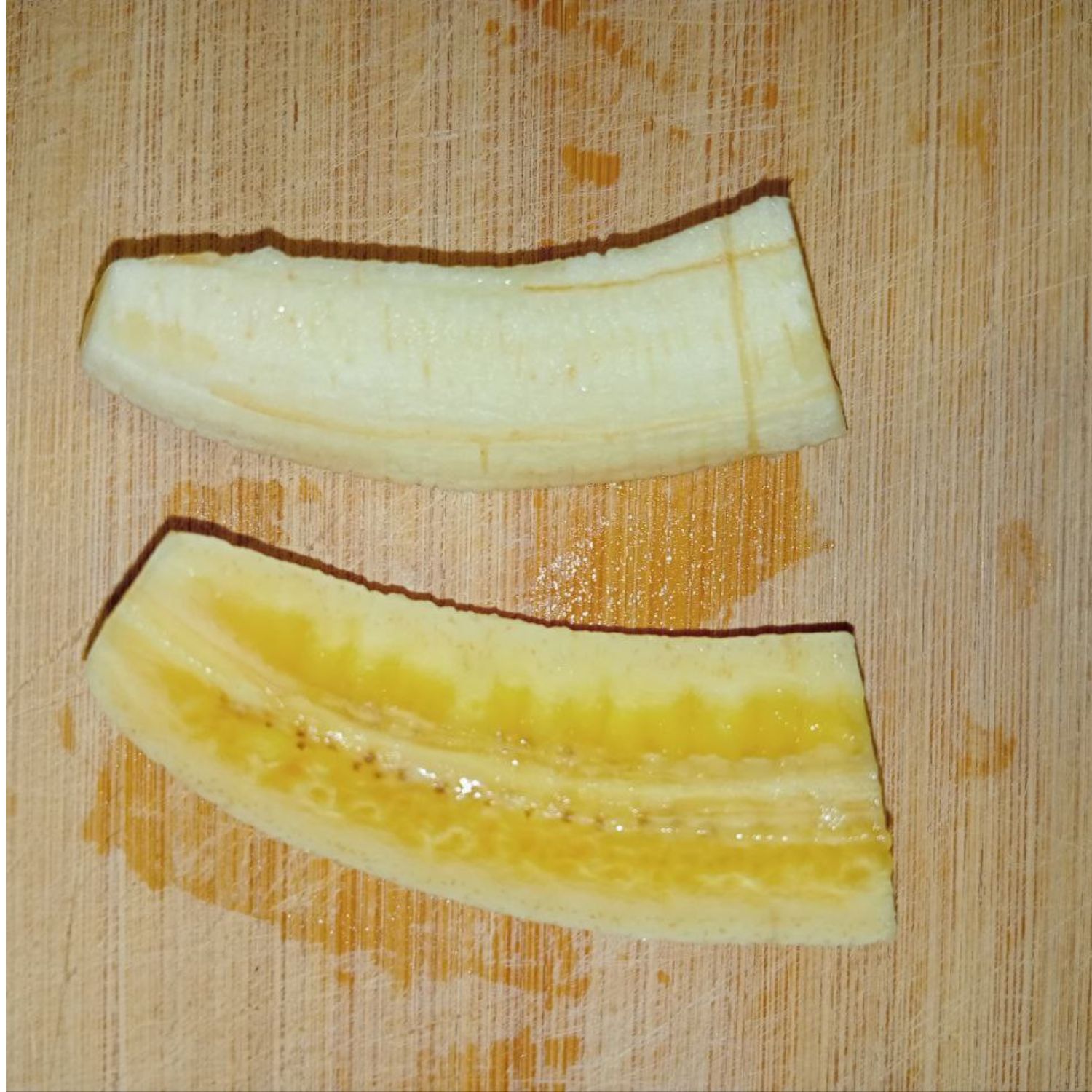
Mashed Banana
It’s as easy as mashing a ripe banana with a fork or spoon and using a silicone spoon to offer it to them.
It’s a good way to get your baby to start handling spoons. Don’t stress if your baby doesn’t know how to do it at first, do it yourself and let them imitate you.

Half Banana with some Peel
Another perfect way to offer banana to your baby. We leave a little bit of peel to make it easier to grasp. Remember to do it yourself first so your baby can mimic you.

Peanut or Almond butter and banana
This option is more nutritious and caloric, but it should be offered only once the food has been perfectly assimilated.
It is always best to let your baby get used to the natural taste of the food for a while before mixing it with other foods.
If you introduce peanut or almond butter, be sure to treat it as a new food, and since it is allergenic, you should wait 3 days before introducing anything new, in case your baby has a reaction.

Frozen Banana
As easy as mashing the banana and putting it in an ice cream mold.
From 10 months on, you can mix the fruit with a teaspoon of natural yogurt to make it creamier.
Also very tasty are ice creams made of fruit mixtures. The one in the photo is mango and banana and it was delicious.
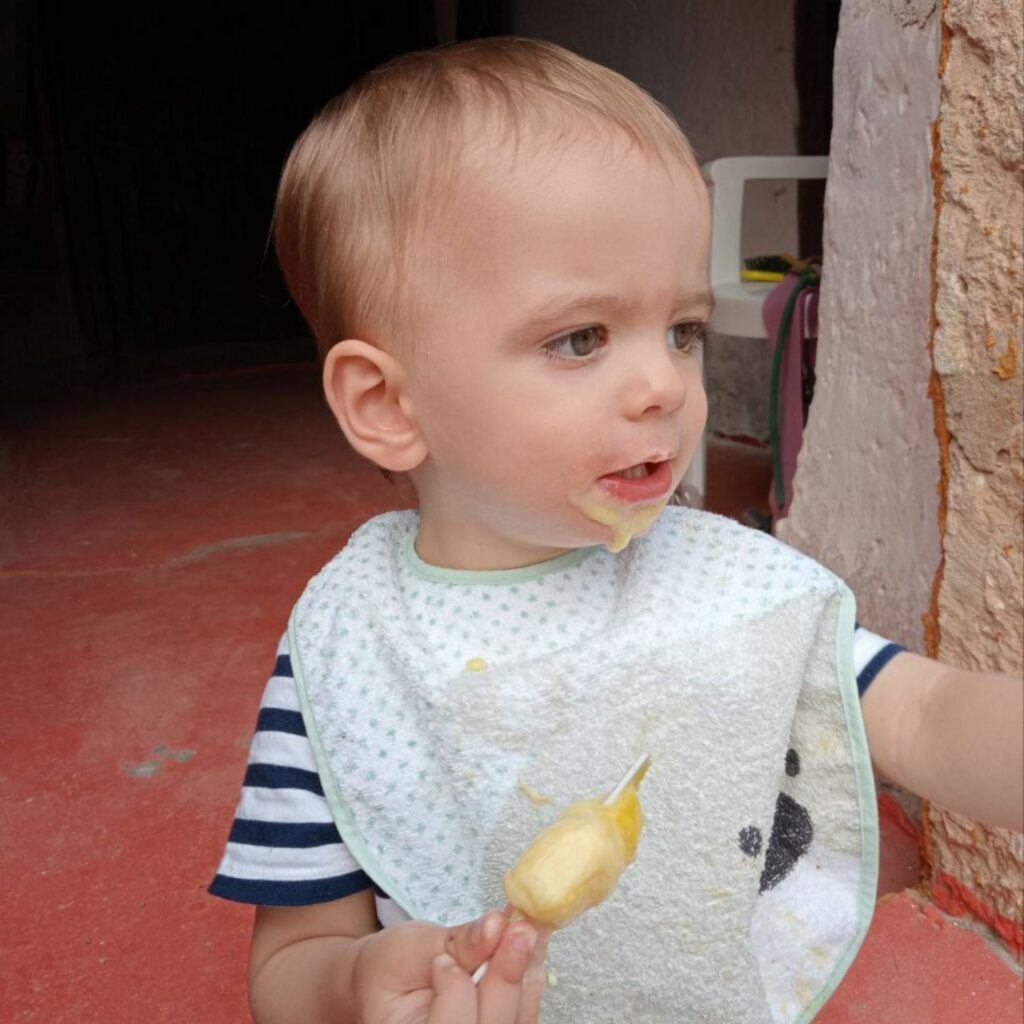
Banana in little pieces
From about 9 or 10 months, when your baby can do the pincer grasp, you can offer the banana in small pieces.
They should be big enough for your baby to pick them up with two or three fingers.

Why are bananas a great BLW food?
They are easy to handle
Bananas are easily mashed or cut into small pieces, making them perfect for BLW as babies can easily pick them up and feed themselves!
A peeled, ripe banana is firm enough for your infant to hold and bring to the mouth, but soft enough to easily be mashed in the gums.
You can also adjust the banana to your baby’s preferred texture. If they enjoy being fed with a spoon, just mash the banana in a bowl with a spoon.
Great nutritional value
Bananas contain a wealth of vitamins, such as Vitamin C, A, B6, potassium and magnesium, which are all important for the growth and development of babies.
They taste amazing!
Its sweetness and taste are loved by kids!
Help with constipation
When bananas have reached maturity, they feature a source of soluble fiber that can assist in combating constipation.
Bananas are a great option for baby-led weaning; they give your little one the opportunity to explore, play and discover the food you provide. Let your baby take the lead and enjoy the experience!
When should you introduce bananas to your baby?
As soon as your baby is displaying the typical signs that they are ready to try solid foods, you can offer them bananas! Usually, this is when babies are around 6 months old – which is when we recommend getting started with solids. For more information on introducing solids, check out our article on that here!
Should you choose Green or Ripe Bananas for Baby led Weaning?
Let’s take a look at their differences:
Green Bananas
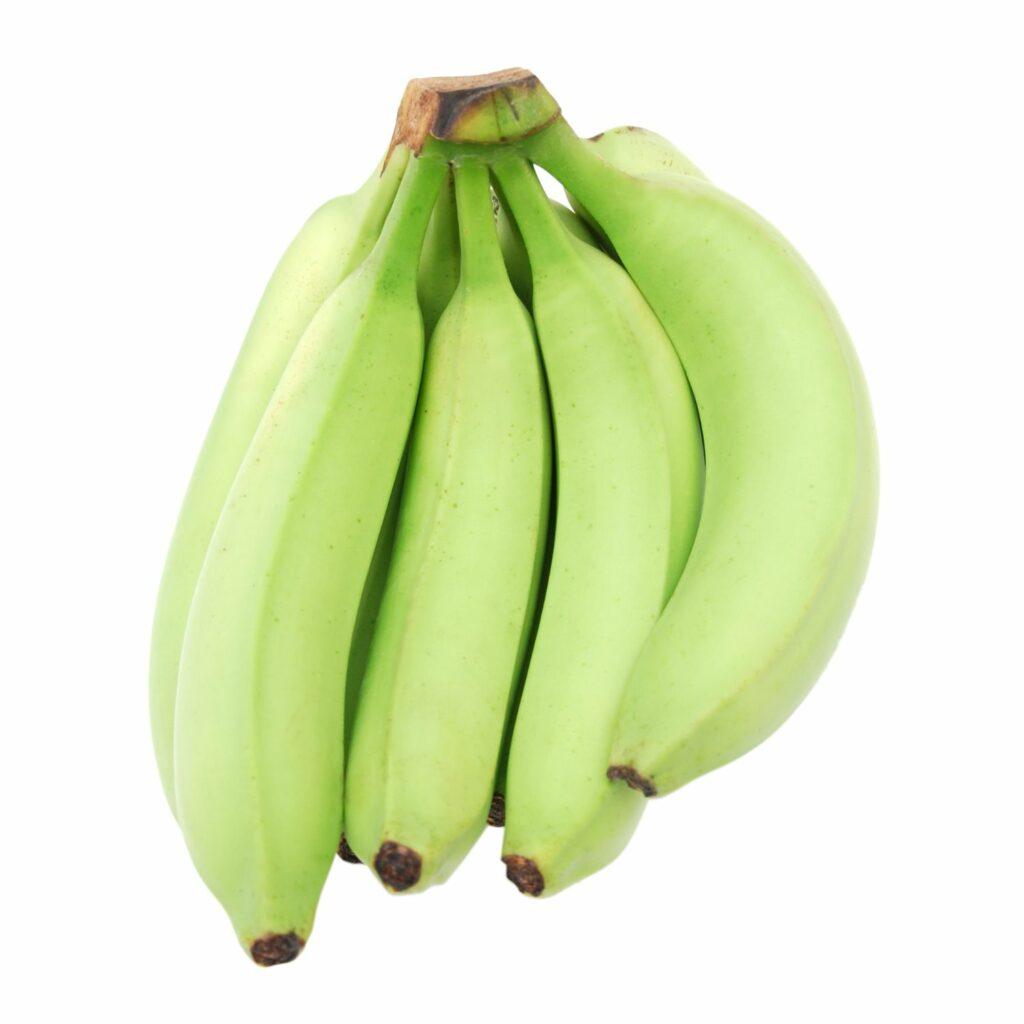
- Green bananas are beneficial because they provide a good alternative to high-sugar foods because of the high levels of resistant starch they contain. The probiotic bacteria found in green bananas is good for your digestive tract and aids in the body’s absorption of other minerals, including calcium.
- Green bananas have certain drawbacks however, including a lack of antioxidants and the possibility of gastrointestinal distress due to the resistant starch they contain.
Ripe Bananas
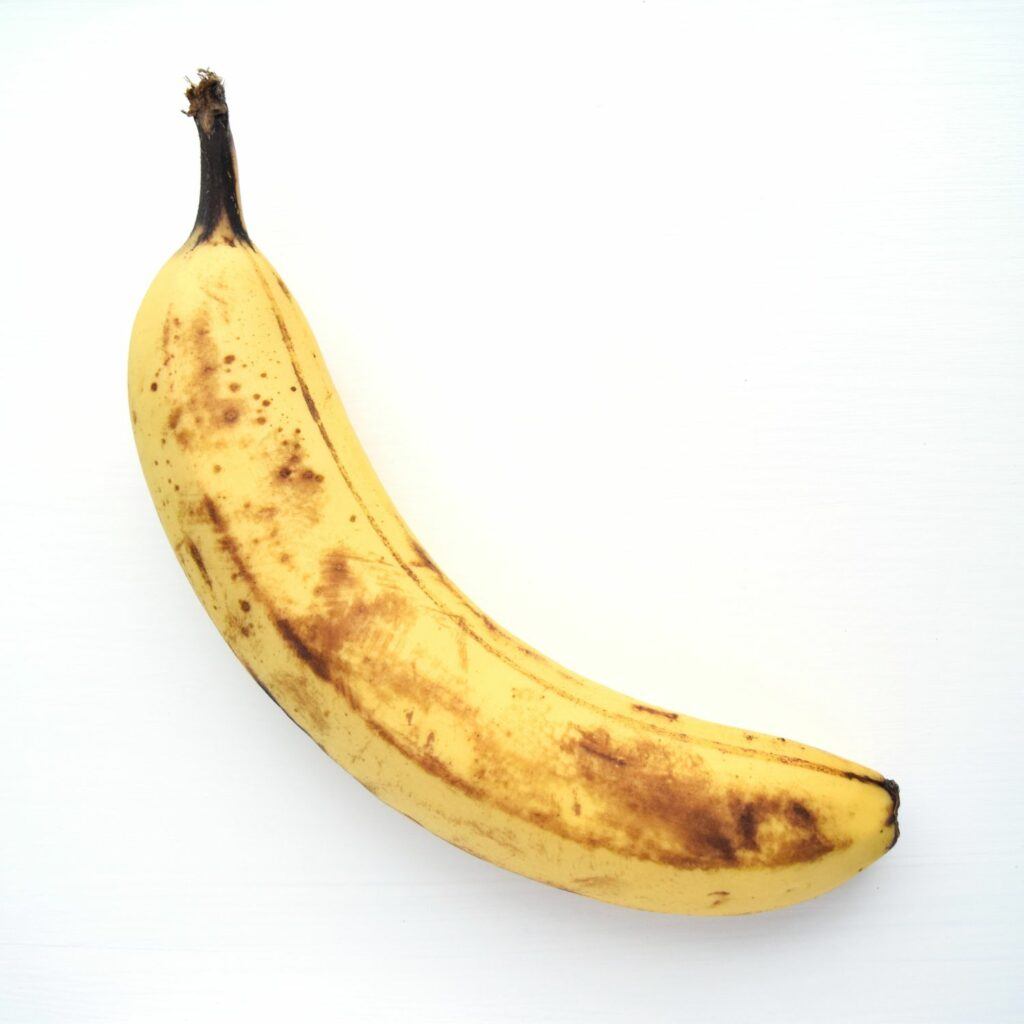
- Ripe bananas convert resistant starch to simpler sugars, making them easier to digest. Ripe bananas process faster due to their higher glycemic index. Ripe bananas have more antioxidants.
- Bananas lose vitamins and minerals when they ripen. Storing and ripening bananas in the fridge reduces this. They sweeten as they ripen!
Which banana is better for babies then?
Whether you should choose ripe or green bananas for Baby Led Weaning (BLW) depends on your baby’s age and development.
- For babies 6 months and younger, it is best to stick with ripe bananas that are mashed or pureed as they are easier to digest. Ripe bananas will also contain more of the essential vitamins, minerals, and energy that your baby needs.
- Once your baby is 10+ months old and has developed the ability to handle more solid foods, then you can introduce green bananas. Green bananas are denser and firmer than ripe bananas, so they may be better suited for a baby who is learning to chew and self-feed. If your baby is having difficulty with the texture of green bananas, try steaming them first to soften them up.
What do bananas provide for your baby?
- Bananas are an incredibly nutritious fruit that offer a wide range of health benefits. They are a good source of dietary fiber, vitamins, and minerals, including potassium, vitamin B6, and vitamin C.
- In addition to these nutrients, bananas contain powerful plant compounds that may offer additional health benefits. These include dopamine and antioxidants like catechins and polyphenols, which are powerful antioxidants.
- Bananas can help to improve digestive health due to their high fiber content, which helps to keep the digestive tract running smoothly, but only if the are ripe.
- They are also a low-calorie snack that your baby will love, it is our first go-to snack for Pablo.
- Furthermore, they have a high potassium content, which helps with blood pressure.
- Finally, bananas can be enjoyed in a variety of ways, making them a versatile and perfect for Baby led Weaning as we said before.
Bananas are not only a good source of dietary fiber, vitamins, and minerals, but also contain powerful plant compounds like dopamine and antioxidants, offering a wide range of health benefits for your baby during the baby-led weaning process.
What is the best way to preserve bananas?
The best way to preserve bananas is to store them correctly.
Bananas should be kept at room temperature, away from direct sunlight.
If the temperature is too warm, the bananas will ripen too quickly. To slow down the ripening process, store the bananas in a cool, dry place, such as a pantry or cupboard.
If you want to extend the life of your bananas even further, wrap them in newspaper or place them in a perforated plastic bag and store them in the refrigerator. This will help slow down the ripening process further, and the bananas should stay fresh for up to two weeks.
Another option is to freeze the bananas; always peeled, they can be frozen whole or in slices. If you choose to freeze the bananas, it’s important to note that they will be mushy when thawed. Freezing is a great way to ensure that you have ripe bananas on hand whenever you need them.
Baby Led Weaning banana FAQ
1. Is it safe to give babies frozen bananas?
Absolutely, in fact it has it’s benefits when they are teething. If you’re looking for a quick and simple solution to provide comfort for your baby’s aching gums, bananas are a great solution!
All you need to do is pop a few in the freezer for a few hours and you’ll have a cool, soft snack that’s perfect for teething.
2. Are there any risks associated with baby-led weaning with bananas?
Choking is always a risk when introducing any type of solid food to your baby. Be sure to cut the banana into thin slices or mash it well before offering it to your baby. Additionally, avoid giving your baby large pieces. If you follow the guidelines we give you in this article, your baby will be fine, just make sure to stay with them the whole time.
3. Are there any foods that should not be eaten with bananas?
It is best to avoid pairing citrusy fruits like grapefruits, strawberries, apples, pomegranates, and peaches with sweeter fruits like bananas and raisins for optimal digestive health.

Banana for Baby-Led Weaning
Ingredients
- 1 Ripe Banana
- 1 tbsp peanut or almond butter (optional)
Instructions
- Peel the banana and cut it into finger-sized sticks. You can also leave half of the peel on to make it easier for your baby to grasp.
- Mash a ripe banana with a fork or spoon until it's smooth. Use a silicone spoon to offer it to your baby. You can also mix in 1 tablespoon of peanut or almond butter for a more nutritious and caloric option.
- Cut a banana in half lengthwise, leaving some of the peel on, and offer it to your baby. This is another perfect way to introduce bananas.
- Mash the banana and put it in an ice cream mold. Freeze it until it's solid, and then you can offer it to your baby as a frozen snack.
- Cut the banana into small pieces once your baby can do the pincer grasp, usually around 9-10 months old. They should be big enough for your baby to pick them up with two or three fingers.
Conclusion
The introduction of bananas as a first food during baby-led weaning is a wholesome and practical choice for both parents and newborns.
Bananas with their soft texture, natural sweetness, and many health advantages, are a fantastic source of fiber, important vitamins, and minerals that promote healthy growth and development.
You may assist your baby in developing wholesome eating habits that will benefit them for the rest of their lives by promoting self-feeding and letting them experiment with various tastes and textures.
Don’t be afraid to include this adaptable fruit in your baby-led weaning menu and watch your child flourish!
We’re Maria and Alberto, a married couple and educators who are nutrition enthusiasts. Even before we had kids, we were already crazy about nutrition.
We’d read scientific articles, watch videos from nutritionists, and spend hours listening to nutrition podcasts.
Today, we continue doing this, but in a different way, as we’ve learned to sift through the noise and trends. Nutrition, like any other field of knowledge, the more you read and learn, the more you develop a comprehensive understanding of reality, and that’s what has happened to us.
Before having our first child, we focused on learning everything we could about child nutrition, using the same techniques we had already employed, backed by our extensive knowledge in nutrition.
Our mission is to help other parents with their children’s nutrition, to help them become the best versions of themselves.
If we are what we eat and drink, which is absolutely true, let’s do it right!


